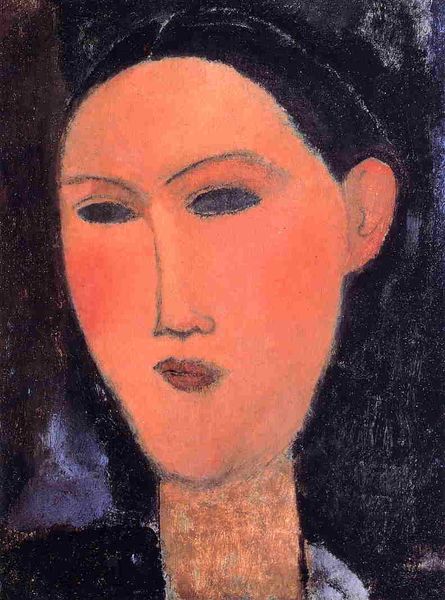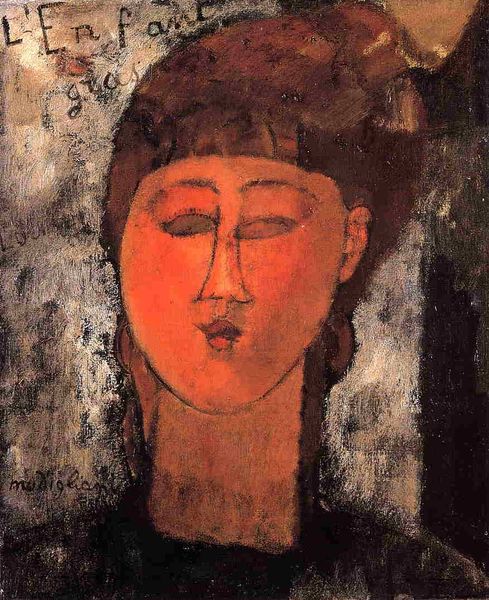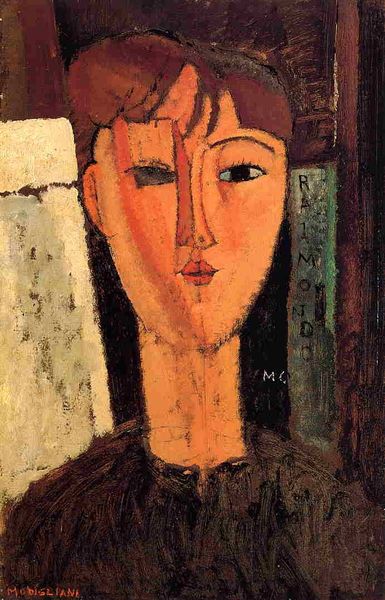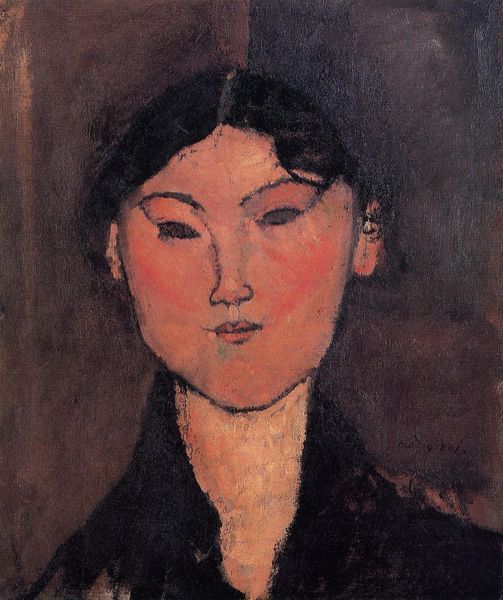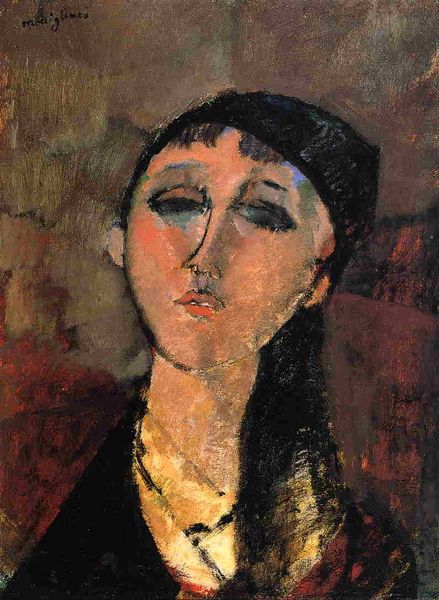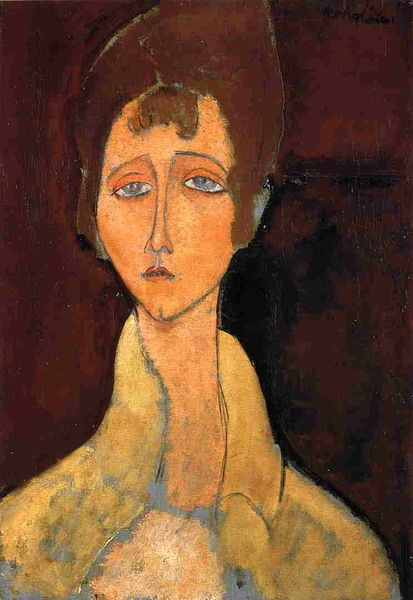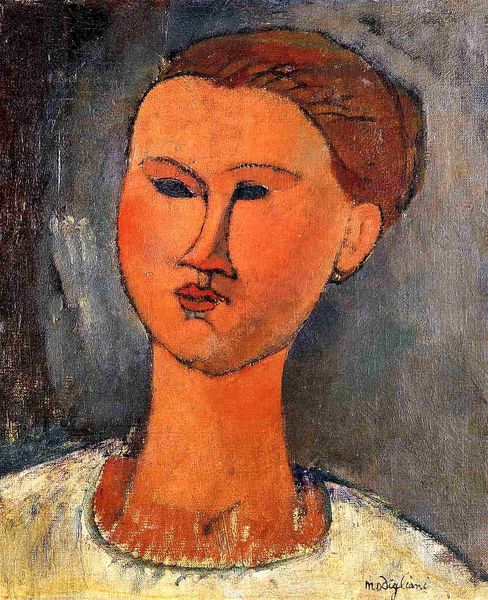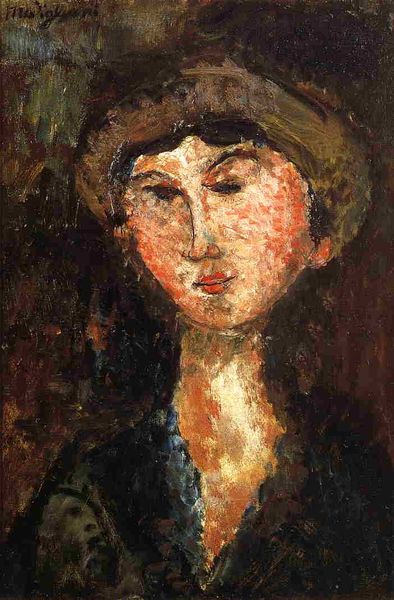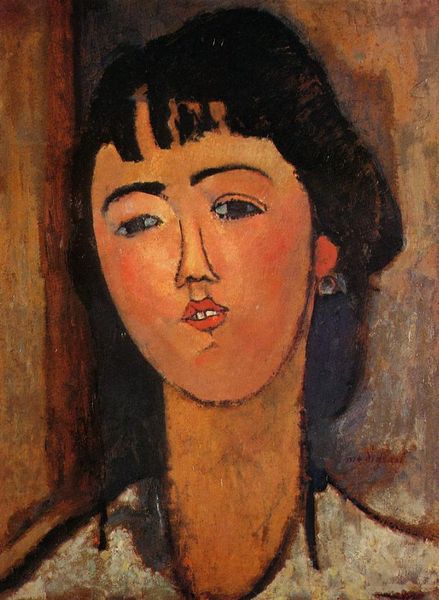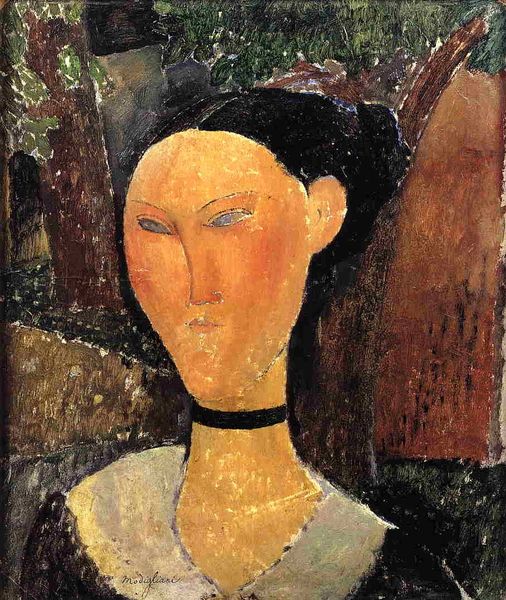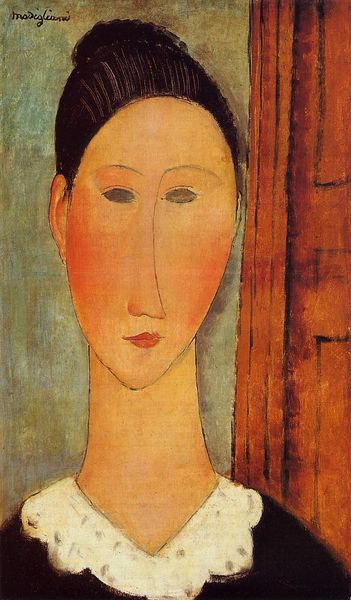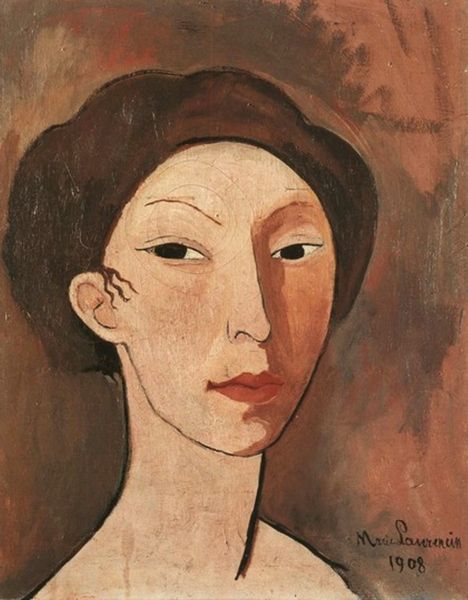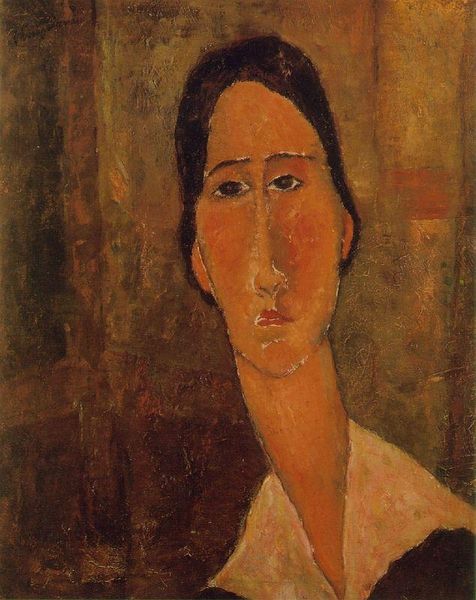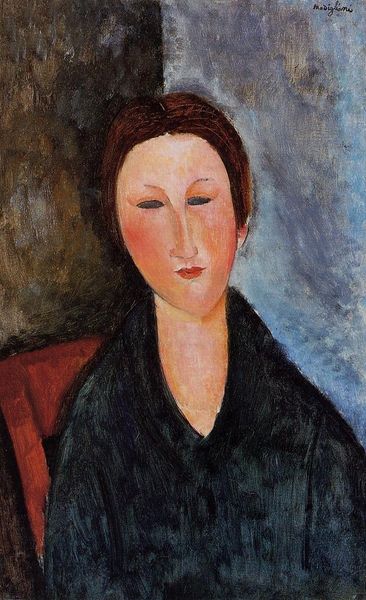
painting, oil-paint
#
portrait
#
self-portrait
#
painting
#
oil-paint
#
figuration
#
intimism
#
expressionism
#
modernism
Copyright: Public domain
Curator: This is Modigliani's "Beatrice Hastings," painted in 1915. Look at those intense, almond-shaped eyes. Editor: It's strikingly raw. The quick, almost rough, brushstrokes give a feeling of immediacy. I'm drawn to the earthy, somewhat muted palette. Curator: Hastings was, for a time, Modigliani’s lover and a figure deeply embedded in the bohemian circles of Paris. Her identity as a woman and a writer in that milieu shapes how we interpret this portrait, wouldn't you agree? What stories might her face conceal? Editor: Absolutely, but let’s not overlook how Modigliani utilizes the oil paint itself. He’s thinned it out in places, allowing the texture of the canvas to show through, especially in the background. See how that underlayer creates a sense of depth, of a hidden structure? It reveals process as much as portrait. Curator: Her gaze definitely captures something of that era, those pre-war years in Europe – the stirrings of modernity and challenges to traditional social norms. It’s a portrait that resists easy answers about gender and artistic representation. I wonder, was he representing her essence, or was she performing a role, and he capturing that? Editor: That tension is clear, isn’t it? Consider how the application of pigment isn’t uniform; look at the layering of colours. The material act of applying that ochre paint, those ruddy hues on her cheeks – there is something very physical and visceral about it. It moves beyond mere representation, suggesting how they connect in real life, too. Curator: Thinking about his creative practice at that time helps deepen our understanding about not only what art meant to him, but perhaps also how social dynamics like power and class shape representations of others in art. It forces us to really analyze our position as a viewer of history. Editor: I agree. To me, analyzing art is like archeology of artistic action, unearthing meaning embedded within the artist’s material engagement – the gestures, the pressures applied with the brush. Both dimensions – social context and process, obviously – inform each other, allowing for multilayered reading. Curator: Absolutely. It invites us to contemplate broader histories and connect the lived experience of those in the early twentieth century, doesn’t it? Editor: Right. When you’re speaking about that time and place, material investigation keeps one honest in interpreting all available signs.
Comments
No comments
Be the first to comment and join the conversation on the ultimate creative platform.
